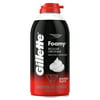Patty Bates
New Member
Hello everyone,
I have a 4-season cottage in the Ottawa area and my water supply is lake water. The lake is about 60 feet away. I was losing prime and pressure in my system and it looks like the water pipe outside has failed. I will be replacing it completely.
I was just curious about the specifics of the job. My understanding is that a trench must be dug, below the frost line so 4 feet deep, between where the current pipe enters the cottage and the lake. Some things I'm wondering about;
- while a backhoe can do this job, should a different tool be used to dig at the shoreline and near the cottage itself?
- what type if pipe should be used? I know the current one is a flexible black pipe, 1-1/4" that looks like PVC, should I use the same material?
- before laying the pipe in the trench, should I insert some type of drainage like gravel first so that the pipe can be laid on it, or is that even necessary?
Thank you,
Patty Bates
I have a 4-season cottage in the Ottawa area and my water supply is lake water. The lake is about 60 feet away. I was losing prime and pressure in my system and it looks like the water pipe outside has failed. I will be replacing it completely.
I was just curious about the specifics of the job. My understanding is that a trench must be dug, below the frost line so 4 feet deep, between where the current pipe enters the cottage and the lake. Some things I'm wondering about;
- while a backhoe can do this job, should a different tool be used to dig at the shoreline and near the cottage itself?
- what type if pipe should be used? I know the current one is a flexible black pipe, 1-1/4" that looks like PVC, should I use the same material?
- before laying the pipe in the trench, should I insert some type of drainage like gravel first so that the pipe can be laid on it, or is that even necessary?
Thank you,
Patty Bates

